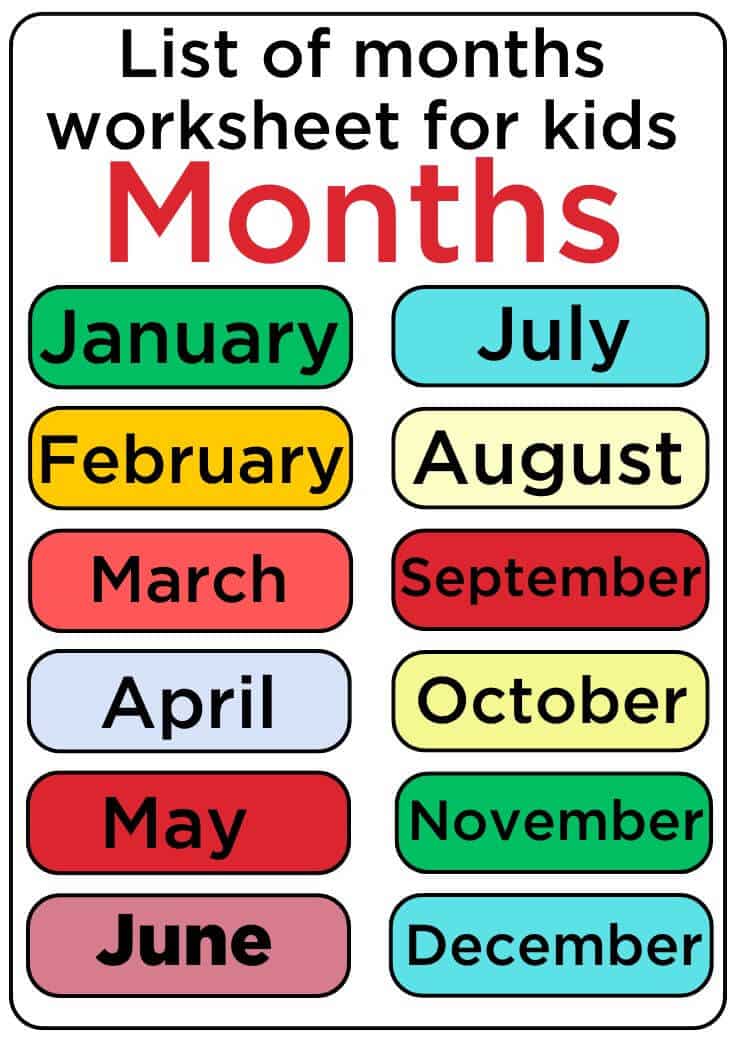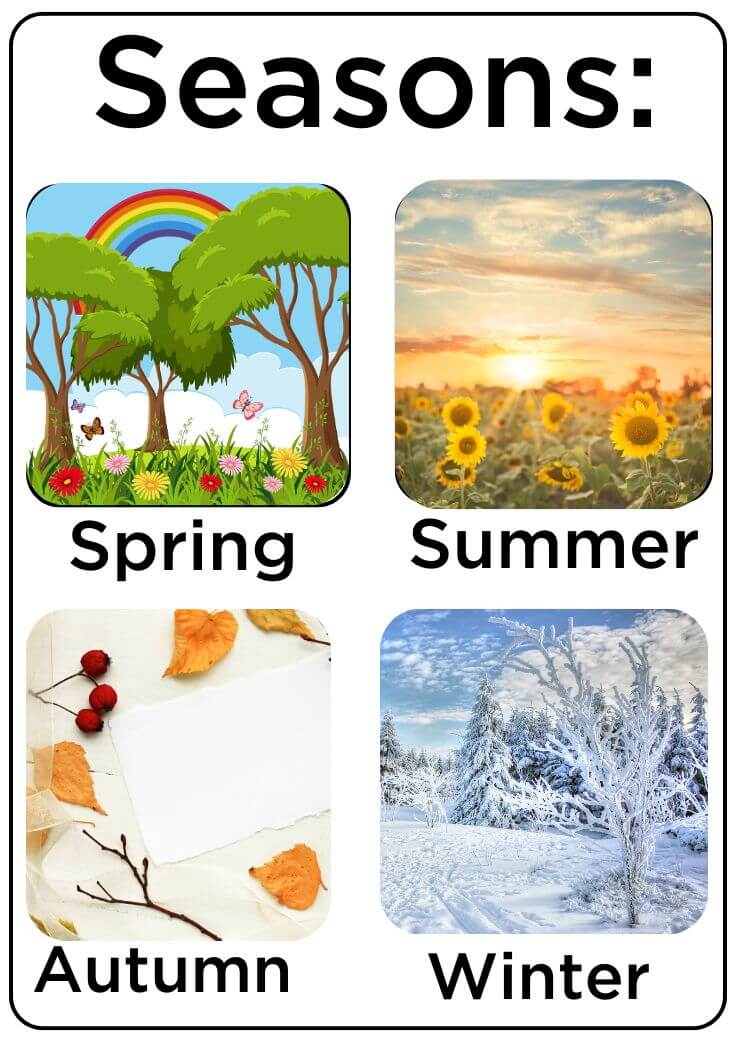Days/Months/Seasons Worksheet In English

Days
- Monday
- Tuesday
- Wednesday
- Thursday
- Friday
- Saturday
- Sunday

Months
- January
- February
- March
- April
- May
- June
- July
- August
- September
- October
- November
- December

Seasons:
- Spring
- Summer
- Autumn (Fall)
- Winter
Days of the Week:
The week has seven days. Each day has its own name, and we use these names to organize our schedule, such as school days and weekends.
- Monday – The first day of the school week.
- Example: “We go to school on Monday.”
- Tuesday – The second day of the week.
- Example: “On Tuesday, I have my music class.”
- Wednesday – The middle of the week, often called “hump day.”
- Example: “Wednesday is our sports day at school.”
- Thursday – The fourth day of the week.
- Example: “On Thursday, I help my mom cook dinner.”
- Friday – The last day of the school week for many.
- Example: “We have a spelling test every Friday.”
- Saturday – The first day of the weekend.
- Example: “On Saturday, we go to the park to play.”
- Sunday – The last day of the weekend, often a family day.
- Example: “Sunday is when we have a big family breakfast.”
Months of the Year:
There are 12 months in a year, and each month has different weather and events. A year is split into four seasons: winter, spring, summer, and autumn.
- January – The first month of the year. It’s usually cold in winter.
- Example: “January is the first month of the new year.”
- February – The shortest month, with 28 or 29 days.
- Example: “February has Valentine’s Day on the 14th.”
- March – The start of spring in some places.
- Example: “In March, the flowers start blooming.”
- April – Known for springtime showers.
- Example: “April is a rainy month in the spring.”
- May – Spring is in full bloom.
- Example: “My birthday is in May.”
- June – The beginning of summer.
- Example: “June is when summer vacation starts.”
- July – A hot summer month.
- Example: “We go to the beach in July.”
- August – Another warm summer month.
- Example: “August is the last month of summer break.”
- September – The start of autumn.
- Example: “In September, we go back to school.”
- October – Known for cool weather and Halloween.
- Example: “October has Halloween at the end of the month.”
- November – Autumn continues, and the weather cools down.
- Example: “November is when we celebrate Thanksgiving.”
- December – The last month of the year and the start of winter.
- Example: “December has Christmas and New Year’s Eve.”
Seasons:
The year is divided into four seasons based on weather patterns.
- Spring – The season of new beginnings, flowers bloom, and the weather gets warmer.
- Example: “In spring, the trees grow new leaves.“
- Summer – The hottest season, perfect for outdoor fun.
- Example: “We go swimming in the summer.”
- Autumn (Fall) – The leaves turn red, yellow, and orange, and the weather cools down.
- Example: “In autumn, the leaves fall off the trees.”
- Winter – The coldest season, with snow in many places.
- Example: “In winter, we build snowmen and drink hot cocoa.”
Read More:

